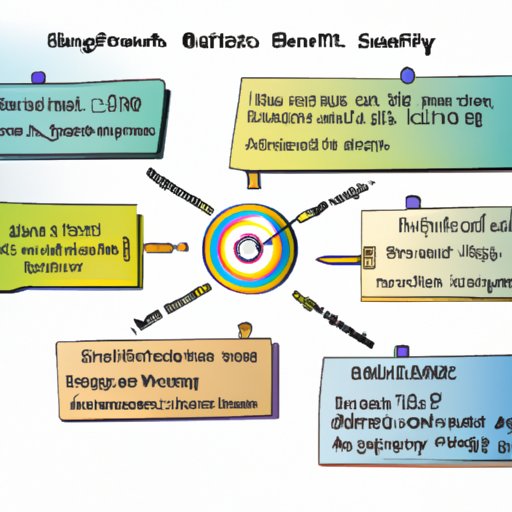Introduction
Science-based targets (SBTs) are targets set by companies to reduce their environmental impact. These targets are based on scientific data and research, which help organizations understand the current state of their environment and the steps necessary to protect it. SBTs can be used to reduce emissions, conserve energy, and promote sustainability in a variety of ways. They are an important tool for businesses that want to ensure their operations are environmentally responsible.
Setting science-based targets is beneficial for both businesses and the environment. For businesses, setting SBTs can help improve their public image and reduce risk and costs associated with environmental damage. For the environment, SBTs can lead to improved environmental performance and help protect natural resources for future generations.
Exploring the Benefits of Setting Science Based Targets
There are a number of benefits to setting science-based targets. The most obvious is improved environmental performance. By committing to reducing their environmental impact, companies can have a positive effect on the planet. This can include reducing emissions, conserving energy, and promoting sustainable practices.
In addition, setting SBTs can also help reduce risk and cost associated with environmental damage. As companies take steps to reduce their environmental impact, they are also taking steps to reduce the potential for costly fines or lawsuits related to environmental issues. This can help save money in the long run.
Finally, setting science-based targets can help improve a company’s public image. Consumers are increasingly interested in companies that are taking steps to protect the environment. By setting SBTs, companies can demonstrate their commitment to sustainability and show that they are taking meaningful steps to reduce their environmental impact.

Examining the Challenges of Achieving Science Based Targets
Although setting science-based targets can have many benefits, there are also challenges associated with achieving them. One of the biggest challenges is developing a comprehensive plan for meeting the targets. This requires a deep understanding of the current state of the environment, as well as the steps necessary to reduce environmental impact.
In addition, there may be implementation barriers that need to be overcome. Companies may need to invest in new technologies or processes in order to meet their targets. This can be a challenge, especially for companies with limited resources.
Finally, measuring progress can be difficult. It can be hard to track progress towards SBTs, as environmental conditions can change quickly. Companies need to have a system in place to monitor progress and adjust strategies as needed.

Case Studies: Companies With Successful Science Based Targets
There are several companies that have achieved success with their science-based targets. Here are a few examples:
Example 1: Unilever
Unilever is one of the world’s largest consumer goods companies. In 2015, they set a target to reduce their carbon dioxide emissions by 50% by 2030. To achieve this goal, they have invested in renewable energy sources, implemented energy efficiency measures, and reduced their water usage. Their efforts have resulted in a reduction of over 8 million metric tons of CO2 since 2015.
Example 2: Apple
Apple has set a target to become 100% carbon neutral by 2030. To achieve this goal, they have committed to using 100% renewable energy for all of their operations and investing in carbon removal projects. They have also committed to using recycled materials in their products and packaging.
Example 3: Microsoft
Microsoft has set a science-based target to reduce their emissions by 75% by 2030, relative to their 2018 levels. To achieve this goal, they have committed to powering their data centers with renewable energy and investing in carbon offsets. They have also launched a program to help other companies set their own science-based targets.

How to Develop and Implement Science Based Targets
Developing and implementing science-based targets can be a complex process, but there are some key steps companies can take to ensure success. First, it’s important to establish clear goals. Companies should decide what they want to achieve and create a timeline for reaching those goals.
Next, companies should determine the resources necessary for achieving their targets. This includes assessing the financial, technological, and human resources required. Companies should also consider external factors, such as regulations and customer expectations.
Third, companies should monitor their progress regularly. This includes tracking emissions and other metrics to ensure that targets are being met. Finally, companies should adjust their strategies as needed. If targets are not being met, companies should reassess their plans and make changes where necessary.
Conclusion
Science-based targets are an important tool for businesses looking to reduce their environmental impact. They can help improve environmental performance, reduce risk and cost, and improve public image. However, setting and achieving SBTs can be challenging. Companies need to develop a comprehensive plan, overcome implementation barriers, and measure progress in order to achieve their targets. There are a number of successful case studies that demonstrate how companies can successfully set and achieve SBTs. With the right strategy, companies can take meaningful steps to reduce their environmental impact.
(Note: Is this article not meeting your expectations? Do you have knowledge or insights to share? Unlock new opportunities and expand your reach by joining our authors team. Click Registration to join us and share your expertise with our readers.)
